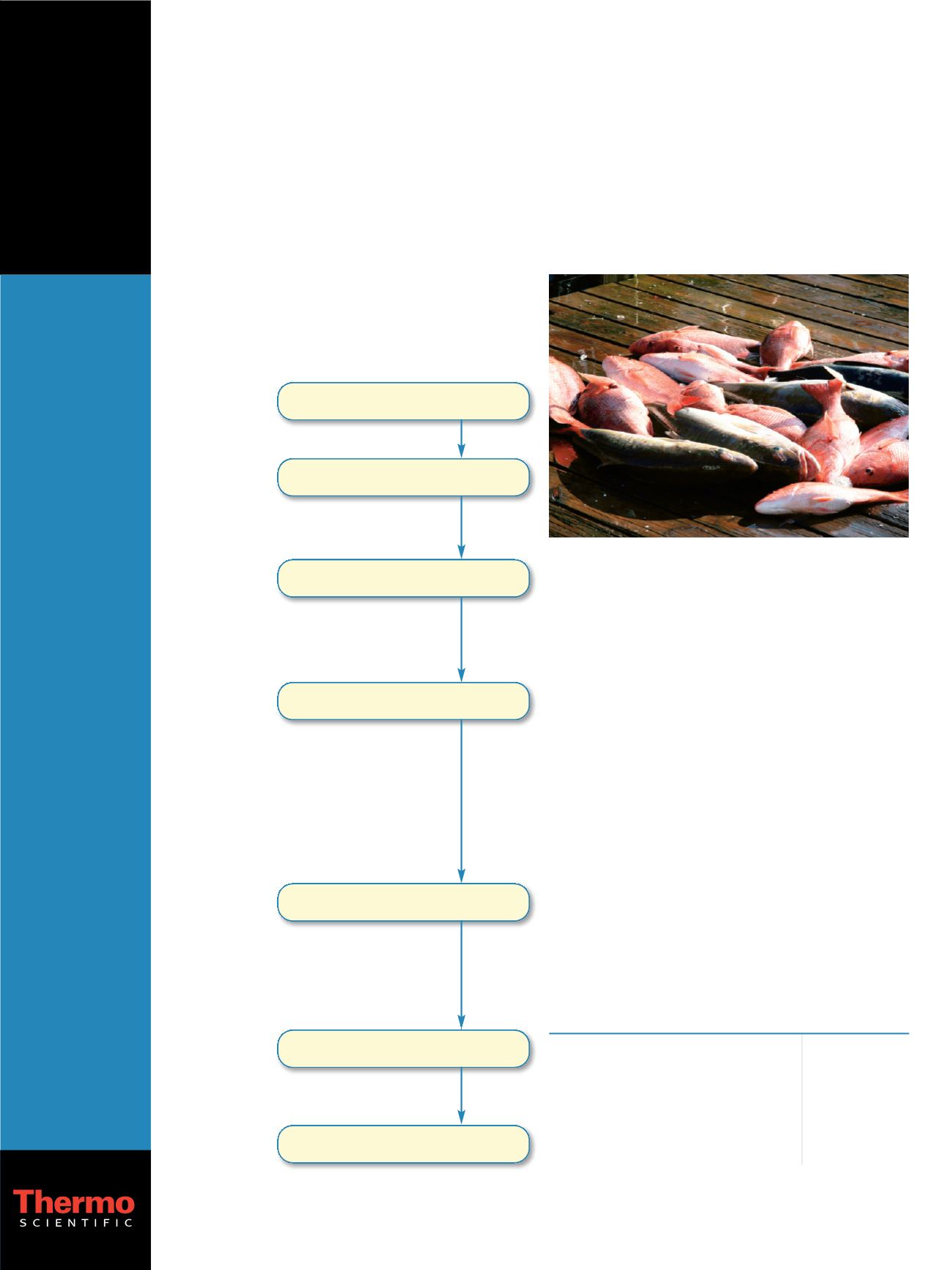
Determination of Polycyclic Aromatic
Hydrocarbons (PAHs) and Aliphatic
Hydrocarbons in Fish by GC-MS/MS
Klaus Mittendorf, Laszlo Hollosi, Ebru Ates, Katerina Bousova, Thermo Fisher Scientific Food Safety Response Center, Dreieich, Germany
Eric Phillips, Hans-Joachim Huebschmann, Thermo Fisher Scientific, Austin, TX, USA
James Chang, Thermo Fisher Scientific, San Jose, CA, USA
1. Sample Analysis Time
Sample preparation
3 hours
Instrument analysis
35 minutes/sample
2. Schematic of Method
3. Scope
This method can be applied to fish and other fatty seafood
samples to detect simultaneously the presence of aliphatic
hydrocarbons and PAH contamination from crude oil
found in the Gulf of Mexico. From the profile using
GC-MS/MS, the method can be used to characterize the
source of contamination. The method gives a quantitative
indication as to whether levels of PAHs exceed safety
limits for human consumption.
4. Principle
The homogenized fish sample is fortified with appropriate
labeled internal standards and saponified with methanolic
KOH. After repeated extraction into hexane, further
clean-up is carried out on a silica-SPE-cartridge. The
concentrated extract is analyzed by GC-MS/MS using a
Thermo Scientific TSQ Quantum XLS gas chromatography
triple quadrupole mass spectrometer system. PAHs of food
safety significance are quantified and compared with the
profile from crude oil collected from the Gulf of Mexico
in May 2010. Additionally the profile of aliphatic hydro-
carbons can be examined.
5. Reagent List
Fisher Scientific USA
Part Number
5.1
Acetone
A9491
5.2
Cyclohexane
C6201
5.3
Hexane
H3021
5.4
Methanol
M/4058/17
5.5
Potassium hydroxide
P/5600/53
5.6
Toluene
AC176850010
Key Words
• TSQ Quantum XLS
• Aliphatic
Hydrocarbons
• Fish Extraction
• Gulf Oil Spill
• Oil Contamination
• PAHs
Method: 51991
Sample (Fish) Homogenization
Sample 2.0 g + Isotopically Labeled IS
Saponification
Extraction and Washing
Concentration and Clean-up
GC-MS/MS
1.
Vortex samples (10 s)
2.
Equilibrate 15 min
3.
Add 200 mL MeOH/KOH solution
4.
Saponify in u-bath for 30 min/60 °C
5.
Cool sample
6.
Filter (glass wool) in 500 mL separator funnel
7.
Extract with 100 mL hexane
8.
Extract a second time MeOH layer with 100 mL
of hexane
9.
Combine hexane layers in separator funnel
10.
Wash twice each time with 50 mL of
MeOH/Water mixture
11.
Evaporate hexane layer to ca. 1 mL
12.
Condition SPE with 3 mL hexane
13.
Apply sample
14.
Elute up to 5 mL with hexane
15.
Gently evaporate under nitrogen stream to dryness
16.
Reconstitute in 180 µL of cyclohexane + 20 µL of
Injection/surrogate standard
Concentration


